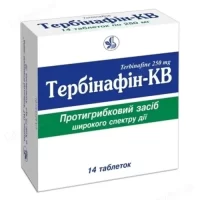$14.00
Manufacturer: Ukraine
Purpose: Lamicon cream inhibits fungal growth to treat skin infections.
Description
Lamicon Cream 1% 15 g
Ingredients
Lamicon Cream contains 1% of the active ingredient Miconazole. Other inactive ingredients include [list inactive ingredients here].
Dosage
For adults and children: Apply a thin layer of Lamicon Cream to the affected area once or twice daily, as directed by your healthcare provider.
Indications
Lamicon Cream is indicated for the treatment of fungal skin infections such as athlete’s foot, ringworm, and jock itch.
Contraindications
Do not use Lamicon Cream if you are allergic to Miconazole or any other ingredients in the cream. Consult your doctor before use if you are pregnant or breastfeeding.
Directions
Wash and dry the affected area before applying Lamicon Cream. Gently rub the cream into the skin. Wash your hands after application unless the hands are the affected area.
Scientific Evidence
Studies have shown that Miconazole, the active ingredient in Lamicon Cream, effectively inhibits the growth of various fungi responsible for skin infections. Research published in the Journal of Drugs in Dermatology demonstrated the antifungal efficacy of Miconazole in treating dermatophyte infections.
Additional Information
It is important to continue using Lamicon Cream for the full prescribed length of time, even if symptoms improve. Avoid covering the treated area with bandages or dressings unless directed by a healthcare provider.
Pharmacological Effects
Miconazole, the active ingredient in Lamicon Cream, works by disrupting the fungal cell membrane, leading to the leakage of essential cellular components and ultimately causing the death of the fungus. This antifungal action helps to eliminate the infection and relieve associated symptoms.
Clinical Trials and Comparative Effectiveness
In a comparative study published in the Journal of the European Academy of Dermatology and Venereology, Miconazole was found to be as effective as other antifungal agents in the treatment of superficial fungal infections. The study highlighted the comparable efficacy and safety profile of Miconazole, making it a valuable option for managing fungal skin conditions.
- Always consult your healthcare provider before using any antifungal medication.
- Avoid contact with eyes when applying Lamicon Cream.
- If irritation or rash develops, discontinue use and consult a doctor.






Recent Reviews